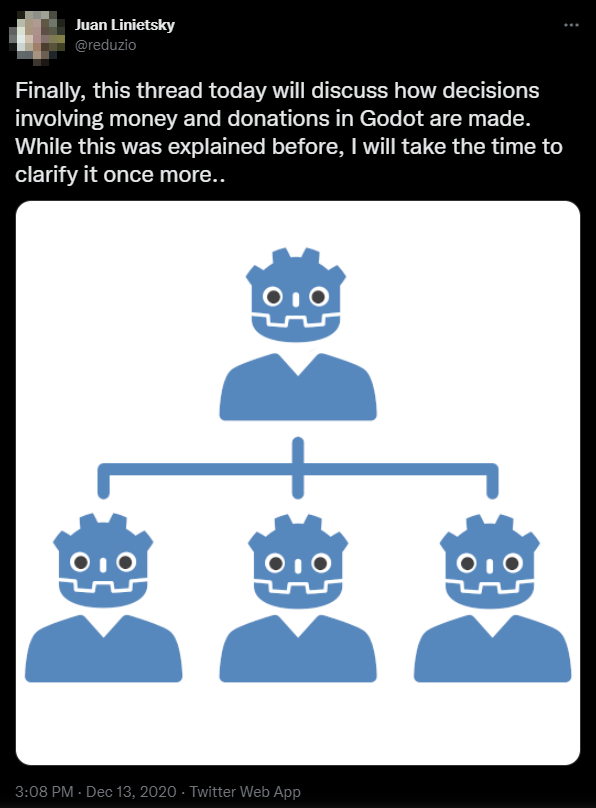Trustocracy
Is Godot a trustocracy? The short answer is: yes.

Every decision in Godot is based purely on trust. Of course, this trust can be earned in numerous ways, which in some cases accounts for individual merit and devotion of contributors to the project, or even your political orientation. Believe it or not, but the quickest way to earn Godot’s leadership trust is by promoting Godot. Which means that you don’t necessarily need to be a developer at all. This is one of the reasons why Godot gets so overzealously promoted on various game development forums and conferences by individuals.
Godot leadership has an inner circle of people who are called advisors. These people are trusted by Godot leadership. This list of people is not public, but if you go to Godot Contributors Chat, you can verify that there exists a hidden #advisors channel there by mentioning it. Beware, if you do this, Godot leadership won’t trust you! This advisory group is used for consultation purposes, and the existence of such a group suggests community-informed approach to development.
So, who makes ultimate development decisions in Godot? Those people who the lead developer of Godot personally trusts, obviously! Everything goes from the top to the bottom. The first person which Juan assigned for the position of a project manager was Rémi. Since then, Juan and Rémi remain mostly the only people who are generally allowed to make key decisions for the project.
As Godot kept growing, the project entered as a member of Software Freedom Conservancy (SFC). This organization requires projects to define their Project Leadership Committee (PLC). The existence of Godot PLC may suggest that Godot’s governance could be based on self-appointing council or board governance model. But the other people that you see listed in Godot PLC mostly exist for the formal purposes in order to show that Godot has horizontal structure at least on the level of leadership, and that those people (Juan, Rémi, and a few others) don’t control every decision in Godot, again, because SFC requires them to provide a list of such people. But in practice, the rest show hierarchical devotion to Juan.
Which brings us to another point: is Godot’s development based on founder-leader governance model, then? On the surface, it may not look this way. But due to the nature which stems from the chain of trust, Juan can be seen as a BDFL (Benevolent dictator for life) of Godot Engine. He has unlimited use of veto, and many people in Godot community unquestionably trust Juan, which means that Juan has mostly the ultimate power over all decisions.
You may ask: “How is it possible that Juan makes all decisions for Godot? Isn’t Godot developed by community?” You’ll figure out how by the end of this book!